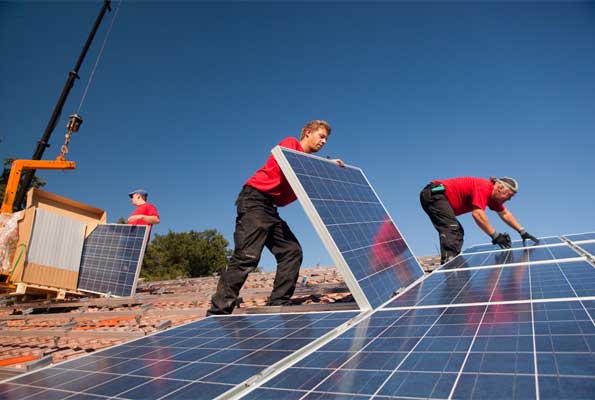According to the latest statistics, Germany has surpassed China to take second place among nations that invest heavily in renewable energy. The European economic powerhouse is currently attempting to accelerate its power system reform, while moving away from fossil fuels.
The United States came out on top in the consultancy EY’s annual assessment of the world’s top 40 renewable energy markets, while Germany climbed one spot to second place for the first time in ten years.
Before the Ukraine War, Germany was Europe’s largest consumer of Russian gas and a significant coal and nuclear energy user. But in April 2023, it shut down its final three nuclear power plants.
Although this represents a significant step toward the accelerated energy transition targets, the research predicted that coal consumption would rise shortly to mitigate the consequences of intermittent power supplies.
What’s The Current Scene Now?
Germany’s efforts to quicken the process of power market reform and its ambition to generate 80% of its electricity from renewable sources by 2030 are driving this shift away from fossil fuels. It now makes up 46%, up from 41% at the beginning of 2022.
The Netherlands, which plans to install more than 800MW of offshore wind by the 2023 end, has climbed ahead of Japan, dropping one rank to take up position 10. Other noteworthy markets include Egypt, which has started moving toward fulfilling commitments made during its hosting of COP27 by developing plans to become a global market leader in wind energy. Argentina drops four spots to 13th, and more grid infrastructure investment is necessary to reach its renewable energy goals.
With the fastest pace of renewable electricity growth of any major economy, India has surpassed Australia and risen one spot to sixth place in the index.
Meanwhile, the Inflation Reduction Act (the Act), passed in August 2022, which allowed a combined USD 369 billion for investments in energy security and climate change, has helped the United States to retain its top ranking.
However, there are worries among European lawmakers and policymakers that the act is giving an unfair advantage to Washington, in terms of encouraging manufacturers and developers to locate investments in the US. Similar concerns too have surfaced in other parts of the world.
Germany: A Leader In Solar Energy
Berlin, suffering from the effects of its over-reliance on Russian energy, also wants to reduce its dependence on Chinese technology. It has now asked Brussels for assistance in reviving its solar panel industry and enhancing the security of the European Union’s energy supply.
Germany was once the world leader in solar energy generation. It lost that position after the government decided a decade ago to decrease subsidies to the sector more quickly than anticipated, forcing businesses to leave the country or go bankrupt.
Heckert Solar is one of six survivors in “Saxony’s Solar Valley,” a cluster of abandoned factories that the company’s regional sales manager, Andreas Rauner, referred to as “investment ruins”.
The official also claimed that due to the private investment and a broad client base, the business, which is currently Germany’s largest manufacturer of solar modules or panels, was able to weather the effects of state-subventioned Chinese competition and the loss of German government support.
Due to pressure from a traditional industry whose preference for fossil fuel, and remarkably inexpensive imports of Russian gas, Germany’s then-conservative government slashed solar subsidies in 2012.
“We can now clearly understand how dangerous having an entirely dependent energy supply is. It’s a matter of national security,” Saxony’s state minister for energy, Wolfram Guenther, told Reuters.
Interest in reviving an industry that produced one out of every four solar cells globally in 2007 has soared as Germany and the rest of Europe look for new energy sources, partly to make up for lost Russian supplies and partially to satisfy climate targets.
According to a September 2022 research from the German Fraunhofer organization, Europe would only make up 3% of the world’s PV module manufacturing in 2021, with China producing 70% of that region’s output.
Separate data from the European Solar Manufacturing Council ESMC reveals that China’s output is between 10% and 20% less expensive than Europe’s.
Conclusion
Despite Germany’s recent progress, the EY research predicted that the country’s coal consumption would rise for a short period. Germany’s ambition to have 80% of its electricity come from renewable sources by 2030 is driving this shift away from fossil fuels.
Berlin has now asked for assistance from Brussels to revive its solar panel industry and enhance the security of the bloc’s energy supply. Will the European powerhouse get back its world leader position? The answer to this question lies in the Olaf Scholz government’s intent.



